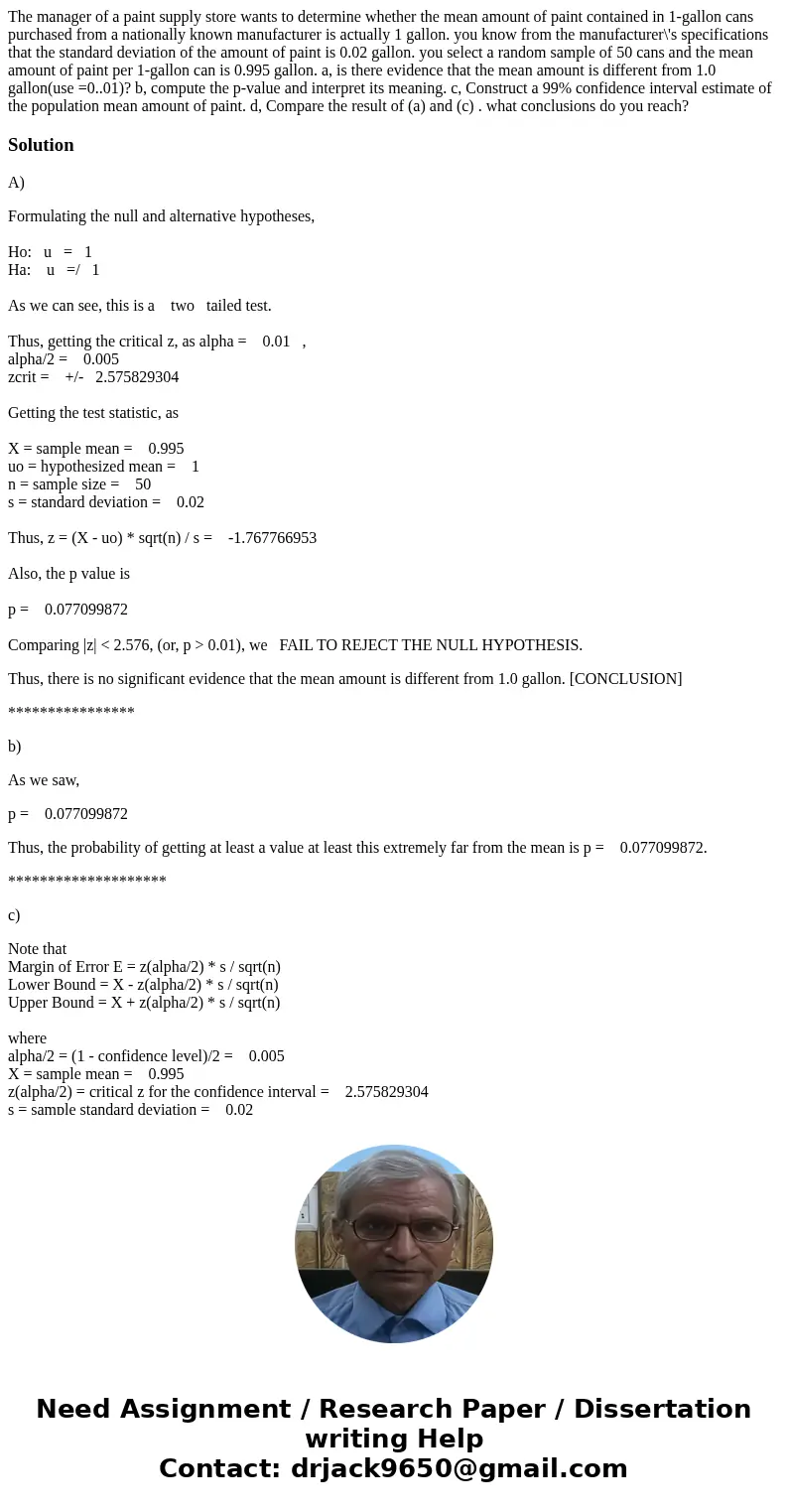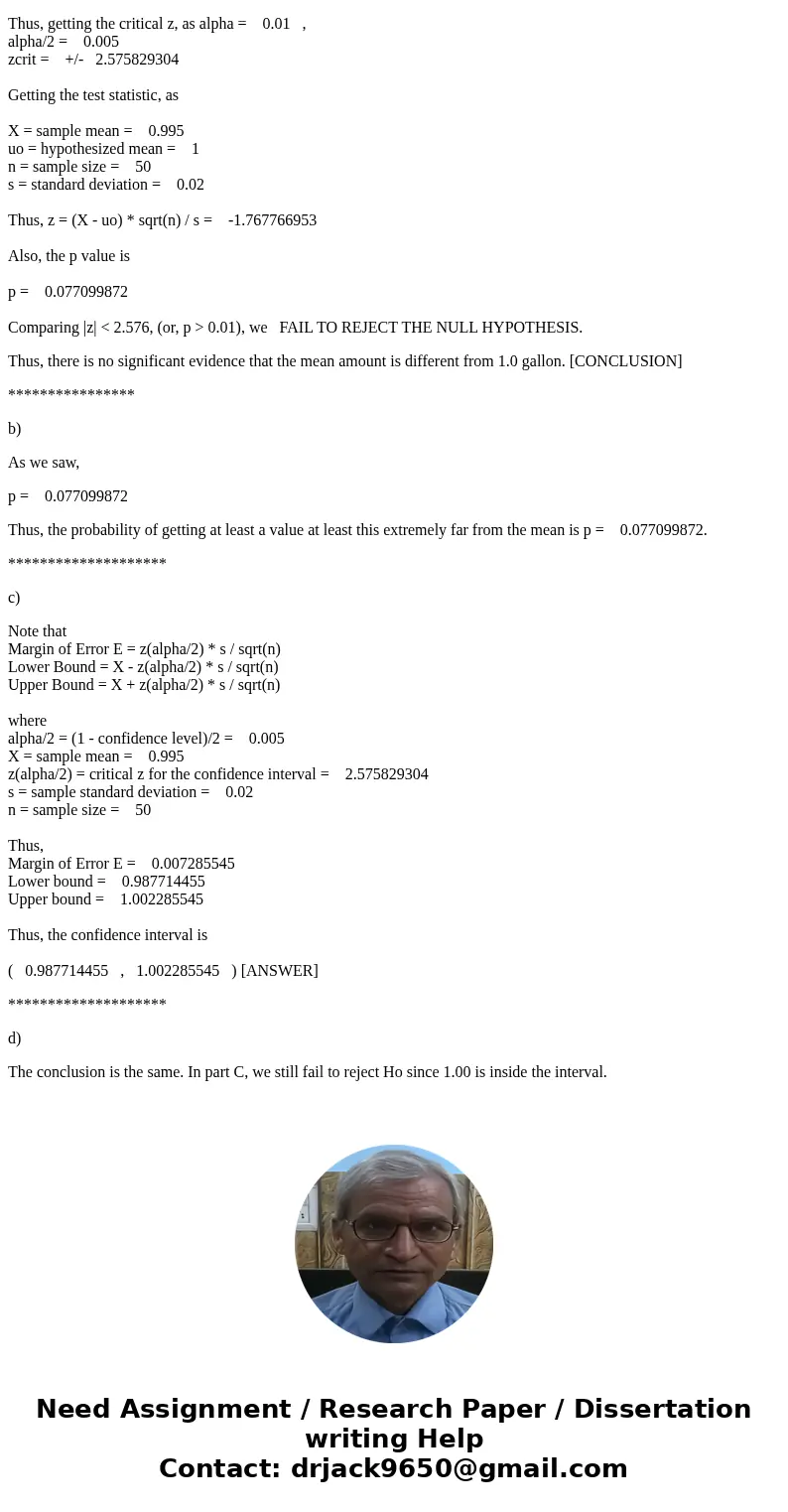The manager of a paint supply store wants to determine wheth
The manager of a paint supply store wants to determine whether the mean amount of paint contained in 1-gallon cans purchased from a nationally known manufacturer is actually 1 gallon. you know from the manufacturer\'s specifications that the standard deviation of the amount of paint is 0.02 gallon. you select a random sample of 50 cans and the mean amount of paint per 1-gallon can is 0.995 gallon. a, is there evidence that the mean amount is different from 1.0 gallon(use =0..01)? b, compute the p-value and interpret its meaning. c, Construct a 99% confidence interval estimate of the population mean amount of paint. d, Compare the result of (a) and (c) . what conclusions do you reach?
Solution
A)
Formulating the null and alternative hypotheses,
Ho: u = 1
Ha: u =/ 1
As we can see, this is a two tailed test.
Thus, getting the critical z, as alpha = 0.01 ,
alpha/2 = 0.005
zcrit = +/- 2.575829304
Getting the test statistic, as
X = sample mean = 0.995
uo = hypothesized mean = 1
n = sample size = 50
s = standard deviation = 0.02
Thus, z = (X - uo) * sqrt(n) / s = -1.767766953
Also, the p value is
p = 0.077099872
Comparing |z| < 2.576, (or, p > 0.01), we FAIL TO REJECT THE NULL HYPOTHESIS.
Thus, there is no significant evidence that the mean amount is different from 1.0 gallon. [CONCLUSION]
****************
b)
As we saw,
p = 0.077099872
Thus, the probability of getting at least a value at least this extremely far from the mean is p = 0.077099872.
********************
c)
Note that
Margin of Error E = z(alpha/2) * s / sqrt(n)
Lower Bound = X - z(alpha/2) * s / sqrt(n)
Upper Bound = X + z(alpha/2) * s / sqrt(n)
where
alpha/2 = (1 - confidence level)/2 = 0.005
X = sample mean = 0.995
z(alpha/2) = critical z for the confidence interval = 2.575829304
s = sample standard deviation = 0.02
n = sample size = 50
Thus,
Margin of Error E = 0.007285545
Lower bound = 0.987714455
Upper bound = 1.002285545
Thus, the confidence interval is
( 0.987714455 , 1.002285545 ) [ANSWER]
********************
d)
The conclusion is the same. In part C, we still fail to reject Ho since 1.00 is inside the interval.


 Homework Sourse
Homework Sourse